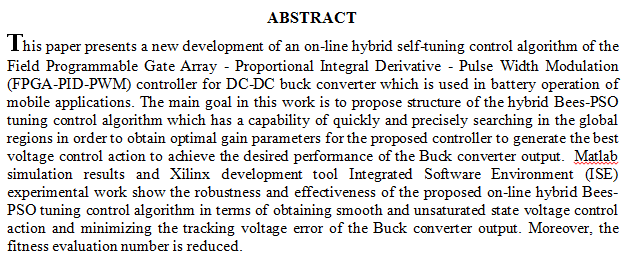
The aim of this study is to investigate the antibacterial capabilities of different coating durations of three nanoparticle (NP) coatings: molybdenum (Mo), tantalum (Ta), and zinc oxide (ZnO), and their effects on the surface characteristics of 316L stainless steel (SS). The coated substrates underwent characterization utilizing field emission scanning electron microscopy (FE-SEM), energy dispersive X-ray spectrometry (EDX), and X-ray diffractometer (XRD) techniques. The antibacterial efficacy of NPs was evaluated using the agar diffusion method. The FE-SEM and EDX images confirmed the presence of nano-sized particles of Mo, Ta, and ZnO on the surface of the substrates with perfectly symmetrical spheres and a uniform distribution of
... Show MoreThin films of Mn2O3 doped with Cu have been fabricated using the simplest and cheapest chemical spray pyrolysis technique onto a glass substrate heated up to 250 oC. Transmittance and absorptance spectra were studied in the wavelength range (300 -1100) nm. The average transmittance at low energy was about 60% and decrease with Cu doping, Optical constants like refractive index, extinction coefficient and dielectric constants (εr), (εi) are calculated and correlated with doping process.
This research study the effect of Titanium dioxide on the tensile properties of
Polystyrene (PS) and Polycarbonate (PC) polymers. The stress – strain curve for pure PS
and pure PC, shows that Young modulus for PS is higher than Young modulus for PC,
because PS have higher ultimate strength than PC.
The addition of TiO2 to PS and PC will reduce the Young modulus and ultimate stress,
because the TiO2 particles will reduces or freeze the orientation of these molecular chain
and reduced the toughness of PC, while when the TiO2 were added to PS, the value of
toughness will be stabilized because TiO2 particles make these chains interlocked and the
mobility of the chains will be restrict.
Fraud crimes, which is a form of crimes against the funds in public office, is one of the crimes of traditional and cutting-edge in the same time, but it took a distinct character from other traditional crimes because of what is based upon, behavioral fundamentals and foundations and expressive image of personal qualities, concentrated in the mental work, the inventive sophistication, and skillful abilities of the perpetrators of these crimes, in addition to what is owned by crooks today a behavioral ability represented in underestimating laws and instructions. Fraud is considered one of the organized crime methods It is the most important method of its methods, all crimes practiced by the cro
... Show MoreThin films samples of Bismuth sulfide Bi2S3 had deposited on
glass substrate using thermal evaporation method by chemical
method under vacuum of 10-5 Toor. XRD and AFM were used to
check the structure and morphology of the Bi2S3 thin films. The
results showed that the films with law thickness <700 nm were free
from any diffraction peaks refer to amorphous structure while films
with thickness≥700 nm was polycrystalline. The roughness decreases
while average grain size increases with the increase of thickness. The
A.C conductivity as function of frequency had studied in the
frequency range (50 to 5x106 Hz). The dielectric constant,
polarizability showed significant dependence upon the variation of
thic
 (1)
(1)
The investigation of the effect of tempering on thermal analysis of
Al-Ti-Si alloy and its composites with MgO and SiC particles was
performed. Thermal analysis was performed before and after
tempering by DSC scan. Optical microscopy was used to identify the
phases and precipitations that may be formed in base alloy and
composites. X-ray diffraction test indicated that the Al3Ti is the main
phase in Al-Ti-Si alloy in addition to form Al5Ti7Si12 phase. Some
chemical reactions can be occurred between reinforcements and
matrix such as MgO.Al2O3 in Al-Ti/MgO, and Al4C3 and Al(OH)3 in
Al-Ti/SiC composite. X-ray florescence technique is used to
investigate the chemical composition of the fabricated specimens.
H
 (1)
(1)
This study was conducted to explore the effects of using ionized water on the productive and physiological performance of Japanese quails (Coturnix japonica). Our study was conducted at a private farm from 20th April, 2016 to 13th July, 2016 (84 d). One hundred 42-day-old Japanese quail chicks were used, divided randomly into 5 groups with 4 replicates. Treatments consisted in a control group (T1 - normal water:), alkaline (T2 - pH 8 and T3 - pH 9), and acidic water (T4 - pH 6 and T5 - pH 5). All birds were fed a balanced diet of energy and protein. The egg production ratio, egg weight, cumulative number of eggs, egg mass, feed conversion ratio, productivity per hen per week, and effects on plasma lipids, uric acid, glucose, calcium, and ph
... Show More (3)
(3)
 (1)
(1)
 (2)
(2)
Nanofluid treatment of oil reservoirs is being developed to enhance oil recovery and increase residual trapping capacities of CO2 at the reservoir scale. Recent studies have demonstrated good potential for silica nanoparticles for enhanced oil recovery (EOR) at ambient conditions. Nanofluid composition and exposure time have shown significant effects on the efficiency of EOR. However, there is a serious lack of information regarding the influence of temperature on nanofluid performance; thus the effects of temperature, exposure time and particle size on wettability alteration of oil-wet calcite surface were comprehensively investigated; moreover, the stability of the nanofluids was examined. We found that nanofluid treatment is more efficie
... Show More (138)
(138)
 (128)
(128)
Influence of metal nanoparticles synthesized by microorganisms upon soil-borne microscopic fungus Aspergillus terreus K-8 was studied. It was established that the metal nanoparticles synthesized by microorganisms affect the enzymatic activity of the studied culture. Silver nanoparticles lead to a decrease in cellulase activity and completely suppress the amylase activity of the fungus, while copper nanoparticles completely inhibit the activity of both the cellulase complex and amylase. The obtained results imply that the large-scale use of silver and copper nanoparticles may disrupt biological processes in the soil and cause change in the physiological and biochemical state of soil-borne microorganisms as well.
 (4)
(4)
 (1)
(1)
